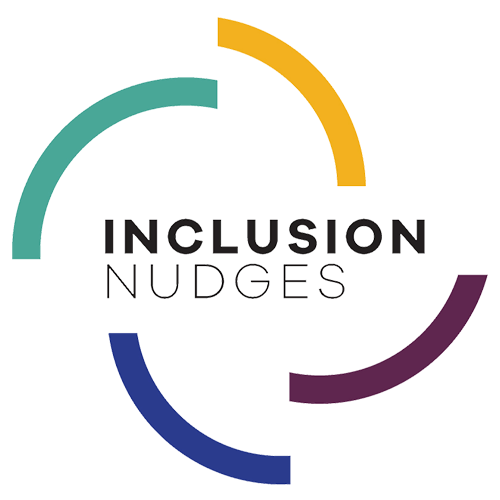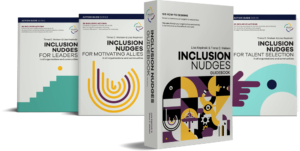Bias is a universal human condition affecting all of us. But seeing bias in ourselves can be hard as it happens in our automatic, system 1 thinking. When we realise we’re biased, it can trigger guilt and shame which doesn’t help to address bias. Instead, we need to be able to call out where bias may be happening so we can apply ways to mitigate this. Here’s a story where this happened to me.
Lisa’s story
In June 2017, I recorded a TEDx Talk illustrating the gap between our intentions for inclusion and equity and our actual behaviours, and the need to constantly focus on how to mitigate the impact of bias that interrupts our good intentions for fairness. I started off with a story illustrating my biased thinking in action. As I proceeded through the talk, I referenced a survey cited in Harvard Business Review in 2015 on “Have you ever been treated unfairly at work”‘, in which 89% overall replied “yes”. I went on to cite the actual categories used in the survey—“men, women, white, non-white“.
How ironic that in this talk to share about how I’m biased in making a talent decision, I revealed yet another way that I’m biased. And I felt it in the pit of my stomach as I used the term “non-white” referenced in the survey. But I passed over this nagging feeling and continued with my talk…the clock was ticking, the cameras rolling, the very hot room filled with over 500 people, and I had a lot to get through.
Shortly after sharing a post with my TEDx Talk, I received a message from a fellow colleague working in inclusion, Nita Sharma, to engage in a dialogue on my use of the term ‘non-white’. As she rightly pointed out, this is based on the default of ‘normal’ is ‘white’ and all others are the exception. This framing perpetuates inequality. That discomfort rose up again. I know better! Why did I use this term? Just because it was used by HBR, did I have to use it also? My work is about challenging the status quo, striving towards more inclusion, and mitigating bias. Yet, my own usage of this term (a term that I normally avoid using) happened, and without me consciously thinking about it.
And there I go again…my biased thinking revealed. How my automatic, unreflected actions get in my way of my best intentions. What to do? I could deny it or dismiss this. I could blame the person who pointed it out. I could sink down with guilt and embarrassment. Or perhaps I can acknowledge that I’m human and that I want to be equable, fair, and inclusive…and learn from it. I could thank the person who engaged in the dialogue with me on this and appreciate her courage for reaching out. I could keep the discomforting visceral memory of this to recommit to being more aware of the impact of language and framing of thoughts.
We know that biased thinking is not going to go away. It’s a human condition. However, I do have a responsibility and a strong motivation to strive towards lessening the impact of bias. Beating myself up for every time I’m biased would be futile. Instead, I want to acknowledge that it’s happened and use the experience to help to moderate the next time where my bias crops up.
And thank you Nita for reaching out and doing it in a way that wasn’t based on shaming me, which can shut down learning. When others hold the mirror to ourselves and actions, this can be a powerful experience for positive action-taking.
What if this happens to you
My story probably isn’t unfamiliar to you. We are all biased, and so we each have many moments that we can share about where bias may have unconsciously taken hold of our thinking and actions. In fact, I know I have many examples everyday of this! However, knowing that bias is common doesn’t absolve us from taking action to address it.
So, here are some practices that I try out when I’m in this situation.
- “Don’t shoot the messenger”. Often when we receive feedback on our behaviour, actions, and patterns, we can (usually unintentionally) ‘attack’ the person that provides us with the insight. Our negative reaction can show up by avoiding the person, questioning their motivations and qualifications, throwing back at them accusations, and not listening to them. In the workplace, this can even have career limiting implications with less opportunities and lower performance ratings. It takes courage for them to do this. Try reframing to see them as your ally rather than your adversary.
- Blame and shame blocks change. This often leads to a negative state of paralysis and inactivity. We don’t take action out of fear of ‘getting it wrong again’. Or we don’t know what to do and we remain isolated in our harming emotions. These negative feelings limit our potential. Notice if blame and shame feelings arise and try turning that emotion towards action-taking to be the best version of yourself and to make positive action in your sphere of influence.
- Knowing isn’t sufficient. Don’t have unrealistic expectations that once known (by our rational, system 2 thinking), that we will now have control to prevent it from happening again. We don’t. Our automatic, system 1 thinking dominates and this is source for most biases. Knowing and will-power are not the source for sustainable change.
- Apply designs to make inclusion easy to do and automatic. To lessen the influence of bias, we need to make it easy to do such as by changing ways we interact, evaluate, decide, and innovate. We need to work with our automatic, system 1 thinking where the vast majority of our cognitive functioning occurs. Inclusion Nudges are designs that leverage behavioural science to make inclusion easier and to become the norm. This is how we DO debiasing in our actions!
To learn more about ways that you can debias by design, read The Inclusion Nudges Guidebook with over 100 examples and the books in the Action Guide Series each with 30 examples of inclusive behavioural designs of what has worked for us and many people like you around the world.







